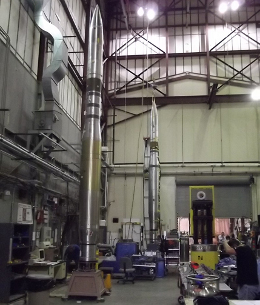
The highest resolution telescope to observe the solar corona was launched successfully on the 11th July 2012. The High-Resolution Coronal Imager instrument, or Hi-C, flew aboard a Black Brunt sounding rocket that was launched from the White Sands Missile Range in New Mexico. The instrument flew for around 10 minutes, spending about half of that time taking high-resolution images of the solar corona in extreme ultraviolet light at a rate of around one per second.
The project was led by NASA’s Marshall Space Flight Center, but included staff from the School of Computing, Engineering, and Physical Sciences at UCLan – and the JHI in particular. Other key partners were the University of Alabama at Huntsville, Smithsonian Astrophysical Observatory, and the Lebedev Physical Institute of the Russian Academy of Sciences.
The Director of Research at UCLan, Dr Robert Walsh, said “The relationship we have formed with NASA and Harvard to create the Hi-C instrument is monumental for UCLan. The Hi-C project showcases our world class research facility”
“Our physicists and engineers played an integral part in developing the camera, which will be used to look at the Sun at an intensity never achieved before. The opportunity this gives to look at the Sun and understand its activity is astounding. The findings from the Hi-C Mission will help us to understand the outer atmosphere of the Sun, learn more about the gases that erupt from it and what mechanisms generate the energy it releases; all of which have knock on effects on Earth”
The spatial resolution on Hi-C is around five times more detailed than the Atmospheric Imaging Assembly (AIA) instrument on the Solar Dynamics Observatory (SDO), that can resolve structures down to 600 miles and currently sends back some of our most stunning and scientifically useful images of the sun. Of course, AIA can see the entire sun at this resolution, while HI-C will focus on an area just one-sixth the width of the sun or 135,000 miles across.
